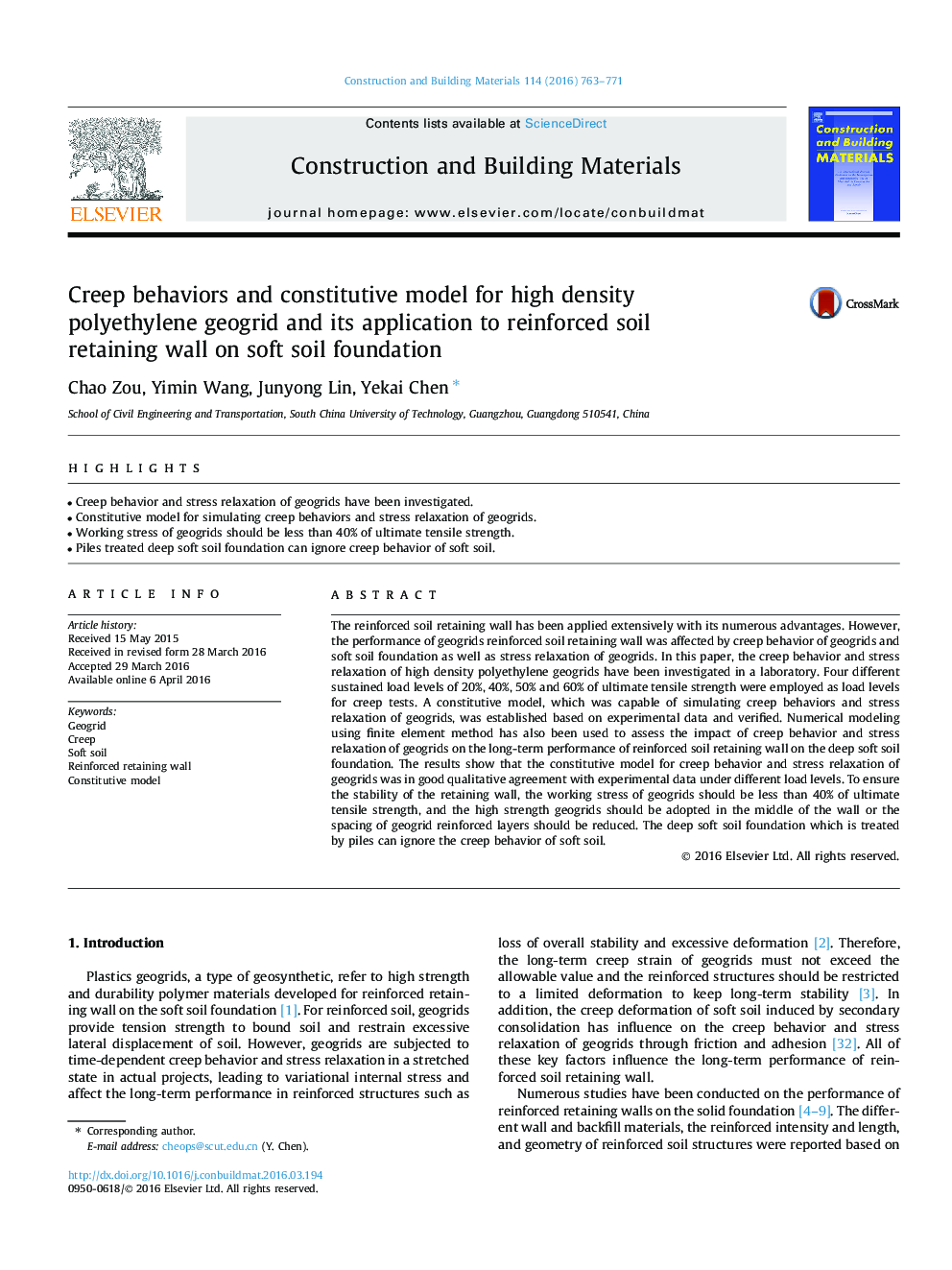| Article ID | Journal | Published Year | Pages | File Type |
|---|---|---|---|---|
| 256031 | Construction and Building Materials | 2016 | 9 Pages |
•Creep behavior and stress relaxation of geogrids have been investigated.•Constitutive model for simulating creep behaviors and stress relaxation of geogrids.•Working stress of geogrids should be less than 40% of ultimate tensile strength.•Piles treated deep soft soil foundation can ignore creep behavior of soft soil.
The reinforced soil retaining wall has been applied extensively with its numerous advantages. However, the performance of geogrids reinforced soil retaining wall was affected by creep behavior of geogrids and soft soil foundation as well as stress relaxation of geogrids. In this paper, the creep behavior and stress relaxation of high density polyethylene geogrids have been investigated in a laboratory. Four different sustained load levels of 20%, 40%, 50% and 60% of ultimate tensile strength were employed as load levels for creep tests. A constitutive model, which was capable of simulating creep behaviors and stress relaxation of geogrids, was established based on experimental data and verified. Numerical modeling using finite element method has also been used to assess the impact of creep behavior and stress relaxation of geogrids on the long-term performance of reinforced soil retaining wall on the deep soft soil foundation. The results show that the constitutive model for creep behavior and stress relaxation of geogrids was in good qualitative agreement with experimental data under different load levels. To ensure the stability of the retaining wall, the working stress of geogrids should be less than 40% of ultimate tensile strength, and the high strength geogrids should be adopted in the middle of the wall or the spacing of geogrid reinforced layers should be reduced. The deep soft soil foundation which is treated by piles can ignore the creep behavior of soft soil.
